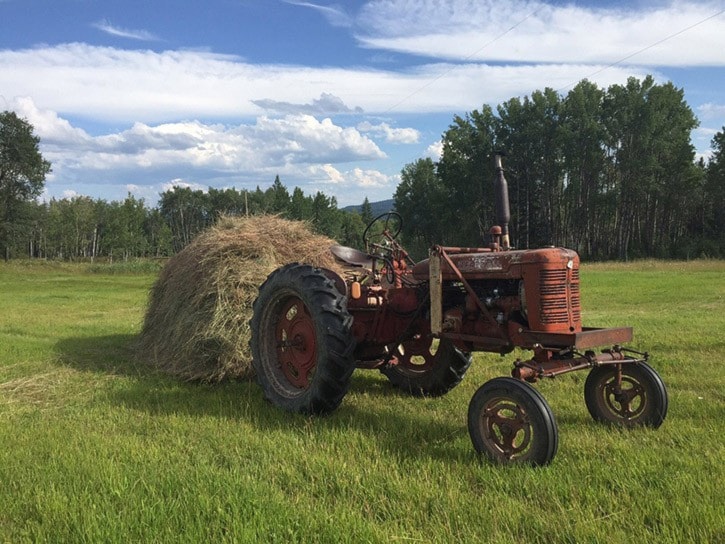Haying season is now in full swing throughout the Cariboo Chilcotin but with the wet weather we have been having this summer many ranchers report having difficulty getting off a good dry crop, so instead of bales they are making silage.
This summer folks at the Keenan farm at Rose Lake (Ochiltree) had to go back to the pioneer method of dry stacking their hay after their big tractor broke down and they wait for a new hydraulic pump to arrive.
The tractor they are using (pictured above) is an International Farmall Super C, built in 1953.
“This tractor was bought by my parents around 1974/75,” said Nola Keenan-Toop.
“We ended up using our John Deere #5 sickle bar mower, another antique that my son Chay was able to track down parts for in the States, to mow the hay.
“Then we used our old dump rake to gather up the dry hay.”
The old tractor didn’t have enough power to run a baler so they had to resort to the old, labour intensive method of dry stacking their hay.
Nola used one-by-six boards to build a slip to fork the hay onto and then they pulled the slip filled with hay to where it would be stacked and stored for the winter.
The cut hay is piled onto the slip using a pitch fork and stamped down around the edges by foot so that it doesn’t fall off while being transported to where it will become part of the greater “winter stack.”
Nola said the winter stack is built by piling up layers of hay and tramping each layer down in the middle as the pile grows. She said dry stacking is a great job for kids and one best done with two or more people.
A little salt is added to keep the hay dry, which is also good for the animals in winter.
The stack can be covered with a tarp or left in the open.
When winter comes, she says feeding time means cutting hay from the stack using a three foot long hay knife.
“Lots of physical labour goes into haying this way but you do what you have to do to get the job done!” Nola said.
“I found muscles that I forgot I had! Hopefully the part comes in quickly for the newer tractor and we can bale the next batch of hay instead!”
She said her late parents Jack and Edith Keenan also had an older Farmall C tractor that they would farm with and would also drive to town in the 1950s to do their business.
“We still have it here and are planning on restoring it,” Nola said. “Between the two tractors there has been tons of loose hay put up.”
